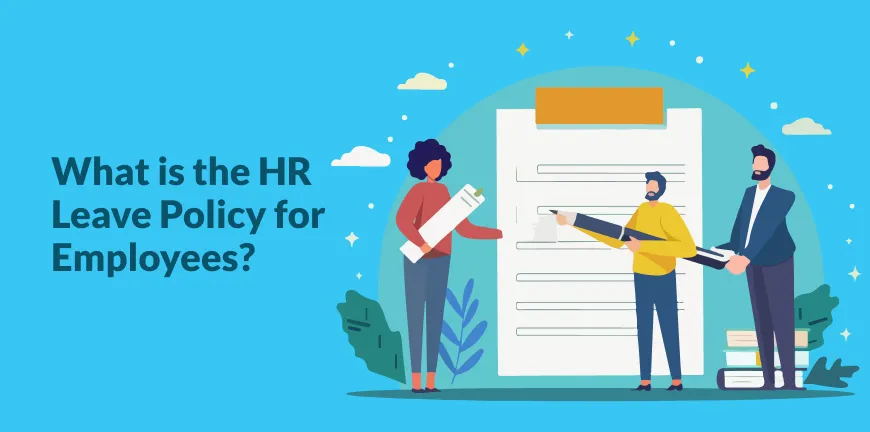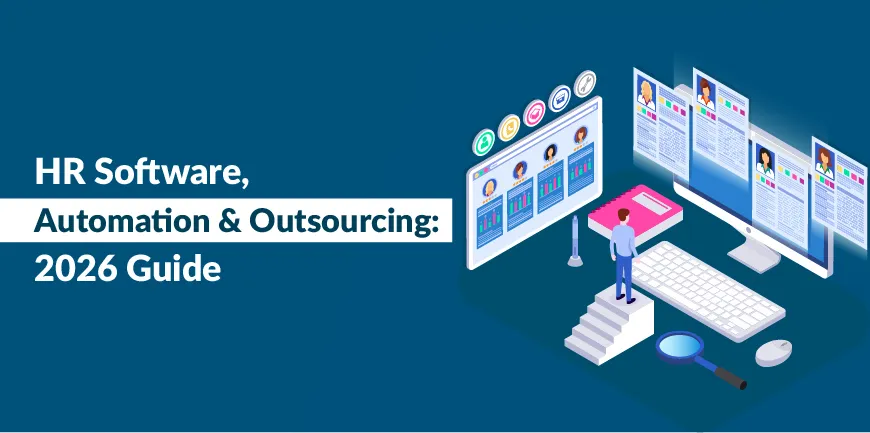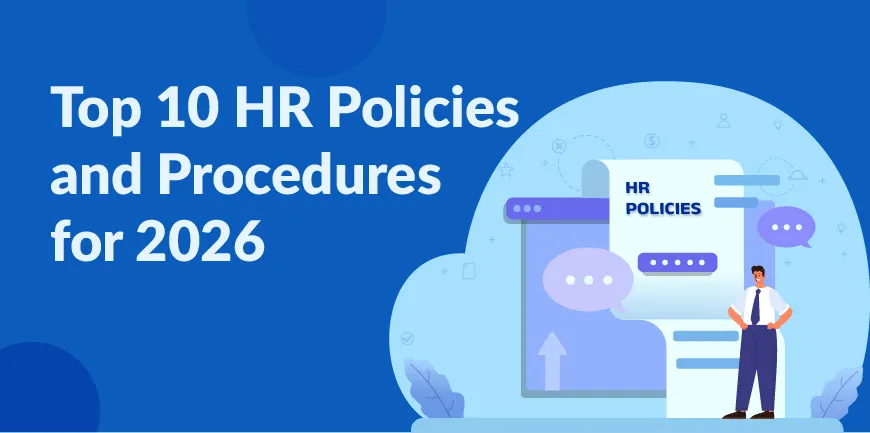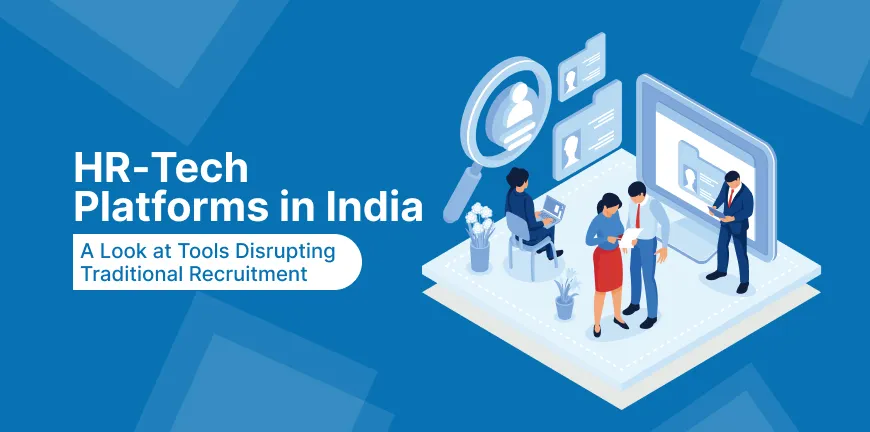
What Makes a Good Manager? 11 Qualities to Lead Successful Teams
19/09/2025
How to Choose the Right Staffing Agency: Tips and Key Factors
19/09/2025- What is an HR Leave Policy?
- Different Types of Leaves Covered Under an HR Policy
- What are the Key Components of an Effective HR Leave Policy?
- What are the Key Benefits of a Clear HR Leave Policy?
- What are the Challenges Encountered in Implementing an HR Leave Policy?
- Best Practices for HR Leave Policy in India
- Conclusion
- Key Takeaways
- Frequently Asked Questions (FAQs)
“Following employee feedback, Starbucks doubled parental leave to up to 18 weeks, aiming for greater equity and well-being.” – Brian Niccol, CEO of Starbucks.
Are you a startup or an MNC looking to improve employee engagement? Then it’s time to look at your HR Leave Policy once again from a fresh perspective.
As a company, if you are taking working days of employees seriously, as it impacts operational efficiency, then equal importance must also be given to HR leave management policy since it can indirectly influence productivity, employee satisfaction, attrition, and other critical KPIs. Let’s have a detailed discussion on the HR leave policy for employees and gain deep insights on how we can make the necessary changes in leave policies and practices to make it 10x times better.
What is an HR Leave Policy?
An HR leave policy is a standardized document prepared by the HR team that outlines the regulations & rules regarding the different types of leaves employees are entitled to take in a year. The leave policy is curated in accordance with the guidelines set by the Government of India and the company’s internal policies.
The objectives of the leave policy as per labour law include:
1. Protect Employee Rights
Companies must make sure employees, regardless of designation or position, receive leave entitlements that are just & prescribed under employment laws.
2. Promote Work-Life Balance
Companies must provide sufficient rest, recovery, & personal time for employees while acting in accordance with statutory leave provisions.
3. Maintain Legal Compliance
Companies must align HR leave management policy with state-specific Shops & Establishments Acts & national labour codes.
4. Prevent Exploitation
HR leave policy guidelines set by companies must safeguard employees against overwork by mandating minimum statutory leave & rest days.
5. Support Health & Safety
Companies must encourage full utilisation of sick leave to mitigate the spread of workplace illnesses. This will help in meeting occupational health standards.
6. Ensure Consistency & Fairness
Companies must standardize HR leave policy for employees across workforce categories while following government-prescribed norms and guidelines.
Different Types of Leaves Covered Under an HR Policy
The types of leave in HR policy will depend on the government policies applicable within the company’s operational jurisdictions and internal policies. Here is a detailed table that gives insights into the different types of leaves typically covered under an HR policy for a company operating in India:
| Leave Type | Description (15 words) | Example / Scenario | Mandatory / Optional |
| Casual Leave (CL) | Short leave for urgent, unplanned personal needs or emergencies without prior scheduling. | Attending a sudden parent-teacher meeting or urgent bank-related work. | Optional (company policy) |
| Sick Leave (SL) | Granted, when an employee is unwell & requires rest, treatment, or medical attention. Also, the leave may be extended in case recovery takes longer. | An employee contracts viral fever and requires 3 days of complete rest. | Mandatory (state laws) |
| Earned / Privilege Leave (EL/PL) | Accumulated annual leave is used for planned vacations, personal commitments, or extended periods of rest. | Taking a family vacation during the summer holidays. | Mandatory (Factories Act / Shops Act) |
| Maternity Leave | Paid leave for female employees during pregnancy, childbirth, & the postnatal recovery period. | The female employee applies for leave for delivery and postpartum care. | Mandatory (Maternity Benefit Act) |
| Paternity Leave | Allow male employees to support their spouses and newborns immediately after childbirth. | Male employee takes leave to care for spouse and newborn. | Optional (company policy) |
| Compensatory Off (Comp-Off) | Time off is provided for working on weekly off days, holidays, or beyond normal working hours. | Worked on Sunday for factory maintenance and will take next Friday off. | Optional (company policy) |
| Public/National Holidays | Mandatory holidays declared by the Central/State Government on national or festival days. | The office is closed on Independence Day (August 15th). | Mandatory (labour laws) |
| Marriage Leave | Leave granted to the employee for wedding or close family marriage-related responsibilities. | An employee is getting married and needs to take leave for the ceremonies. | Optional (company policy) |
| Bereavement Leave | Leave is provided during the death of a close family member for mourning and rituals. | The employee’s parent passes away, requiring immediate leave. | Optional (company policy) |
| Leave Without Pay (LWP) | Unpaid leave is availed when all paid leave balances are exhausted. | An employee takes an additional week off after exhausting their earned leave balance. | Applicable (discretionary) |
| Half-Day Leave | Short leave allows the employee to be absent for half of a working day. | Attending a child’s school annual day function in the afternoon. | Optional (company policy) |
| Adoption Leave | Leave granted to adoptive parents, especially mothers, for bonding and childcare. | An employee adopts a child and requires time for initial care and bonding. | Optional (progressive firms) |
What are the Key Components of an Effective HR Leave Policy?
The key components of a robust HR leave policy provide a well-churned-out framework that brings compliance, transparency, & fairness within the company. These elements help companies bring an equilibrium between operational efficiency & employee well-being, satisfaction, and legal obligations. Here are 10 key components of an HR leave policy for employees:
1. Leave Entitlement & Types
This aspect of HR leave management policy clearly defines categories of leave such as sick, casual, privilege, maternity, & other special types of leave. These types of leave in HR policy include eligibility, accrual rules, & carry-forward provisions, ensuring employees gather acumen on their entitlements transparently.
2. Eligibility & Accrual Rules
This component narrows down which employee is eligible for different leave types, how leave days accrue monthly or annually, whether carry-forward to next work cycle is allowed, & applicable probationary restrictions. This specificity ensures fairness across workforce categories.
3. Application & Approval Process
This element configures a step-by-step procedure for applying leaves. This includes notice periods, necessary documentation, manager approvals, escalation hierarchy, & use of HRMS tools, streamlining requests, & ensuring smooth communication within teams.
4. Compliance with Labour Laws
This component aligns leave policy as per labour law. This ensures non-negotiable provisions like earned leave, maternity leave, national holidays, & sick leave are embedded in the employee leave policy to negate penalties, disputes, or legal non-compliance.
5. Leave Encashment & Carry-Forward
This element of HR leave rules and regulations describes rules on unused leave balances, including maximum accumulation limits, carry-forward conditions, and monetary encashment eligibility, giving employees flexibility while maintaining cost control for the organisation.
6. Special Leave Provisions
This aspect of HR leave policy for employees covers organisation-specific policies like paternity, adoption, bereavement, study leave, or sabbatical options. These crucial breaks enhance employee well-being, inclusivity, and engagement beyond statutory requirements while supporting personal and professional development needs.
7. Communication & Accessibility
Communication & accessibility ensure HR leave policy guidelines are communicated clearly via employee handbooks, intranet portals, and HRMS dashboards, allowing employees to easily access their leave balances, entitlements, and procedures without confusion or misinterpretation.
8. Monitoring & Record-Keeping
Monitoring & Record-Keeping in HR leave management mandates accurate tracking of leave applications, balances, and usage via HR systems. This organized documentation ensures data is audit-ready, transparent, & aligned with compliance requirements for inspections, reporting, and workforce planning.
9. Flexibility & Employee Well-Being
This aspect of HR leave policy for employees balances business continuity with employee wellness. This approach allows flexible leave adjustments, half-day options, or remote work alternatives, ensuring workplace productivity while respecting individual personal & health-related needs.
10. Grievance Redressal & Exceptions
It provides a framework for addressing leave-related conflicts, appeals, or exceptions fairly. This aspect of HR leave management policy ensures employee trust, reduces dissatisfaction, and promotes consistent policy application across diverse teams and organisational hierarchies.
What are the Key Benefits of a Clear HR Leave Policy?
Without a well-crafted HR Leave Policy, organisations face compliance risks, employee dissatisfaction, operational disruptions, and many other issues. Here are 5 key benefits of deploying a structured HR leave policy for employees:
1. Ensures Legal Compliance
A well-compiled HR leave management policy complements labour mandates without oversights, reducing or completely negating instances of penalties, internal disagreements, or litigation. Additionally, it promotes a healthy environment where employees will receive their statutory leave entitlements with full transparency, protecting the interests of both the employer & employee.
2. Boosts Employee Satisfaction
Clear HR leave policy guidelines foster trust, reduce confusion, and enhance employee morale. This transforms a workplace into a cohesive space where employees feel valued, cherished, supported, & motivated to contribute proactively to the organisation’s overall success.
3. Improves Workforce Planning
With structured leave tracking & approvals, managers can pre-empt absences, allocate available resources efficiently, & maintain operational continuity. This organised leave management approach prevents disruptions in productivity & project timelines caused by unplanned or emergency leaves.
4. Promotes Transparency & Fairness
Uniform application of HR leave rules and regulations eliminates bias or favouritism, providing all employees equal access to entitlements. This approach strengthens workplace trust, builds accountability, and fosters a culture of fairness across teams.
5. Enhances Employee Well-Being
Encouraging employees to take rest breaks, vacations, or medical leave improves health, reduces burnout, and supports work-life balance. A strong deployment of leave policy as per labour law contributes to higher engagement, long-term retention, and overall organisational stability.
What are the Challenges Encountered in Implementing an HR Leave Policy?
Implementing an HR leave policy isn’t without its share of obstacles. Organisations often face compliance, communication, workforce diversity, & operational challenges that demand meticulous planning, consistent execution, & technology-driven support. Here are the 6 key challenges faced by companies in deploying a robust HR leave policy for employees:
1. Ensuring Legal Compliance
Frequent amendments & modifications in the labour laws & state-specific mandates create a conundrum for organisations to keep leave policies updated, compliant, & uniformly applicable across diverse employee categories.
2. Balancing Business Continuity
Managing employee absences without disrupting workflow, project deadlines, or customer service continues to pose a serious threat to companies’ ability to stay competitive. This employee’s non-availability situations impact operations severely, especially during peak business periods or unexpected large-scale leave requests.
3. Employee Awareness & Communication
Employees may not fully understand HR leave management policy details. This leads to misuse, confusion, or disputes about leave entitlements, approvals, and applicability, affecting trust and organisational harmony.
4. Managing Diverse Workforce Needs
Different categories of employees, like blue-collar, white-collar, and contract staff, require customised leave provisions. These employment bifurcations make it challenging to design policies that are fair, inclusive, and relevant for all.
5. Technology & System Limitations
Lack of robust HRMS tools or manual leave tracking can lead to errors, inconsistencies, and administrative overload. This reduces HR leave policy effectiveness and employee satisfaction.
6. Handling Exceptions & Grievances
Unforeseen circumstances, emergency leave requests, or disputes require careful handling. However, maintaining consistency and fairness in certain cases of leave applications can be difficult for HR teams.
Best Practices for HR Leave Policy in India
Here are 5 best practices to make HR Leave Policy more rewarding:
1. Align with Labour Laws
The company must ensure the HR leave policy for employees complies with national & state-specific labour regulations. The leave policy must cover mandatory entitlements like earned leave, sick leave, maternity leave, and public holidays in a transparent and just manner.
2. Clearly Communicate Policy
Publish HR leave management policy in employee handbooks, internal newsletters, and HRMS systems. This ensures staff understand entitlements, processes, & responsibilities without ambiguity or misinterpretation.
3. Leverage Technology Tools
Implement automated HRMS platforms for leave applications, approvals, balance tracking, and compliance reporting. This minimises errors and administrative workload for HR teams.
4. Offer Flexibility & Inclusivity
Incorporate optional leaves like paternity, adoption, or bereavement. This ensures inclusivity, employee well-being, and work-life balance beyond statutory minimum requirements.
5. Regular Policy Review
Continuously update leave policies based on legal changes, workforce needs, & employee feedback. This proactive approach helps in maintaining fairness, compliance, and organisational effectiveness.
Conclusion
A successful HR leave policy forms the backbone of employee well-being and organisational compliance. By defining clear entitlements, aligning with labour laws, & promoting fairness through a viable HR leave management policy, companies can minimise disputes and strengthen trust.
While deployment poses certain challenges like compliance complexities, workforce diversity, and communication gaps, adopting best practices like leveraging HRMS tools, offering flexibility, & regular reviews ensures smooth operations and reduced absenteeism.
A structured HR leave policy for employees not only safeguards employee rights but also boosts morale, productivity, and overall organisational sustainability.
Key Takeaways
- A clear HR leave policy ensures compliance, fairness, transparency, and protects employee statutory rights effectively.
- Multiple types of leave in HR policy, like casual, sick, earned, and maternity, support diverse workforce needs and inclusivity.
- Challenges in implementation include compliance updates, workforce diversity, communication gaps, technology limitations, and grievance handling.
- Best practices involve aligning with labour laws, leveraging HRMS tools, offering inclusivity, and regular updates.
- Structured leave policies enhance employee satisfaction, health, productivity, and workforce planning, driving long-term organisational success.
Frequently Asked Questions (FAQs)
1. What is the standard HR Leave Policy in India?
An HR Leave Policy in India outlines leave entitlements, procedures, and compliance requirements, balancing employee well-being with organisational productivity and legal mandates.
2. How many leaves are mandatory for employees in India?
Mandatory leaves are subject to variations by state laws, but generally include earned leave, sick leave, national holidays, & maternity leave under statutory provisions.
3. What is the difference between casual leave and earned leave?
Casual leave covers short-term urgent needs, while earned leave is accrued annually for planned vacations, longer breaks, or personal commitments.
4. Is maternity leave mandatory under HR Leave Policy?
Yes, maternity leave is mandatory in India under the Maternity Benefit Act, providing female employees with paid leave during childbirth and recovery.
5. How can companies manage employee leave effectively?
Companies can manage leave effectively through a clear HR leave management policy, HRMS tools, compliance alignment, regular communication, and transparent approval processes, ensuring fairness.
Contact Us For Business Enquiry

Rajkumar Shanmugam
Rajkumar Shanmugam is the Head of HR at ALP Consulting, bringing over 19 years of comprehensive HR leadership experience across India and international markets. His expertise spans talent acquisition, employee relations, performance management, compliance, and HR transformation. Rajkumar has a proven track record of driving people-centric initiatives, enhancing workplace culture, and aligning HR strategy with business goals. With extensive experience in US staffing operations and global mobility, he continues to lead organizational excellence through innovation and employee engagement.




